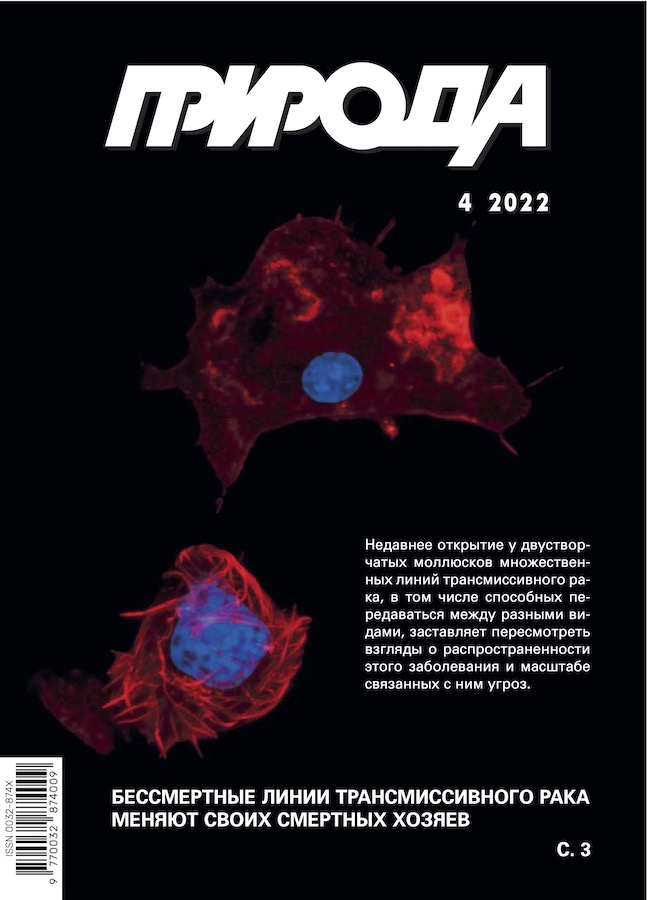Earth’s Crust Responds to Atmospheric Processes
- Authors: Ingel L.K.1, Yaroshevich M.I1
-
Affiliations:
- Research and Production Association “Typhoon”, Federal Service for Hydrometeorology and Environmental Monitoring
- Issue: No 4 (2022)
- Pages: 27-37
- Section: Articles
- URL: https://journals.eco-vector.com/0032-874X/article/view/627737
- DOI: https://doi.org/10.7868/S0032874X22040032
- ID: 627737
Cite item
Abstract
For a long time, seismologists considered various hydrometeorological signals as annoying hindrances to their main studies. However, in some circumstances, seismic signals can be very useful for understanding hydrometeorological processes. Even more interesting is that the impact of such processes on the earth’s crust is quite noticeable. Nowadays a lot of evidences on the effects of intense atmospheric processes on the earth’s crust are accumulated. Such processes, actually, can also affect the seismic regime, i.e., the frequency and intensity of earthquakes. The article describes some modern research in two directions: registration and analysis of weak seismic signals as a source of information about atmospheric processes and the influence of intense atmospheric phenomena on seismic activity. In particular, a number of papers suggest the possibility of operational registration of such dangerous phenomena as tornadoes and squall winds by seismic analyzing techniques. Statistics shows that intense events such as tropical cyclones not only generate seismic signals, but can also significantly affect seismic activity.
About the authors
L. Kh Ingel
Research and Production Association “Typhoon”, Federal Service for Hydrometeorology and Environmental Monitoring
Email: lev.ingel@gmail.com
Obninsk, Kaluga Oblast, Russia
M. I Yaroshevich
Research and Production Association “Typhoon”, Federal Service for Hydrometeorology and Environmental MonitoringObninsk, Kaluga Oblast, Russia
References
- Феофилактов В.Д. Помехи в длиннопериодной сейсмометрии. М., 1977.
- Природные опасности России. Т.5: Гидрометеорологические опасности. Под ред. Г.С.Голицына и А.А.Васильева. М., 2001.
- Ингель Л.Х., Ярошевич М.И., Бабкина В.Ф. О сейсмических проявлениях конвективной облачности. Известия РАН. Физика атмосферы и океана. 2004; 40(5): 689–695.
- Гилл А. Динамика атмосферы и океана. Т.1. М., 1986.
- Шметер С.М. Термодинамика и физика конвективных облаков. Л., 1987.
- Raspet R., Hickey C.J., Koirala B. Corrected tilt calculation for atmospheric pressure-induced seismic noise. Applied Sciences. 2022. 12(3): 1247. doi: 10.3390/app12031247.
- Хегай В.В., Легенька А.Д., Абунин А.А.и др. Солнечная активность, вариации галактических лучей и глобальная сейсмичность Земли. Геомагнетизм и аэрономия. 2022; 62(1): 40–51.
- Yaroshevich M.I., Ingel L.Kh., Lysenko D.A. On seismic manifestations of intensive atmospheric processes. Fluxes and Structures in Fluids. Proc. Intern. Conf. Saint Petersburg, June 2013. Moscow, 2013: 333–335.
- Активная сейсмология с мощными вибрационными источниками. Новосибирск, 2004.
- Tatom F.B., Knupp K.R., Witton S.J. Tornado detection based on seismic signal. Journal of Applied Meteorology. 1995; 34(2): 572–582.
- Tatom F.B., Witton S.J. The transfer of energy from tornado into the ground. Seismological Research Letters. 2001; 72(1): 12–21. doi: 10.1785/gssrl.72.1.12.
- Vincent R.K., Zhizhen Zh., Ping Sh., Shaofen Zh. Wavelet-packet transformation analysis of seismic signals recorded from a tornado in Ohio. Bulletin of the Seismological Society of America. 2002; 92(6): 2352–2368. doi: 10.1785/0120010124.
- Kisslinger C. Seismograms associated with the near passage of tornadoes. Journal of Geophysical Research. 1960; 65(2): 721–728. doi: 10.1029/JZ065I002P00721.
- Ингель Л.Х., Феофилактов В.Д., Ярошевич М.И. Регистрация сейсмических сигналов, связанных с торнадо. Доклады РАН. 2002; 386(6): 813–817.
- Valovcin A., Tanimoto T. Modeling the excitation of seismic waves by the Joplin tornado. Geophysical Research Letters. 2017; 44: 10256–10261. doi: 10.1002/2017GL074185.
- Ингель Л.Х. Эффективный механизм генерации сейсмических сигналов при взаимодействии смерчей с поверхностью земли. Доклады РАН. 2004; 395(2): 247–250.
- Табулевич В.Н. Комплексные исследования микросейсмических колебаний. Новосибирск, 1986.
- Ebeling C.W. Inferring ocean storm characteristics from ambient seismic noise: A historical perspective. Advances in Geophysics. 2012; 53: 2–32.
- Tanimoto T., Valovcin A. Stochastic excitation of seismic waves by a hurricane. Journal of Geophysical Research: Solid Earth. 2015; 120: 7713–7728. doi: 10.1002/2015JB012177.
- Голицын Г.С. Статистика и энергетика тропических циклонов. Доклады РАН. 1997; 354(4): 535–538
- Жарков В.Н. Внутреннее строение Земли и планет. М., 1983.
- Ярошевич М.И. Некоторые особенности динамики циклонической и сейсмической активности в северо-западной части Тихого океана. Доклады РАН. 2008; 420(5): 674–678.
- Ярошевич М.И. Тропические циклоны как возможный фактор, влияющий на сейсмическую активность циклонической зоны северо-западной части Тихого океана. Известия РАН, Физика Земли. 2011; 7: 80–85.
- Ярошевич М.И. Тропические циклоны и сейсмическая активность циклонической зоны северо-западной части Тихого океана. Исследование Земли из космоса. 2012; 3: 66–77.
- Соболев Г.А., Закржевская Н.А., Соболев Д.Г. К вопросу о влиянии циклонов на сейсмичность. Вулканология и сейсмология. 2012; 2: 27–38.
- Гарагаш И.А., Ингель Л.Х., Ярошевич М.И. Об одном возможном механизме влияния атмосферных процессов на сейсмическую активность вблизи берегов океанов. Известия РАН, Физика Земли. 2004; 8: 91–96.
- Ингель Л.Х., Ярошевич М.И., Петрова Л.И. О механизме воздействия тропических циклонов на земную кору. Доклады РАН. 2009; 425(5): 674–677.
Supplementary files









